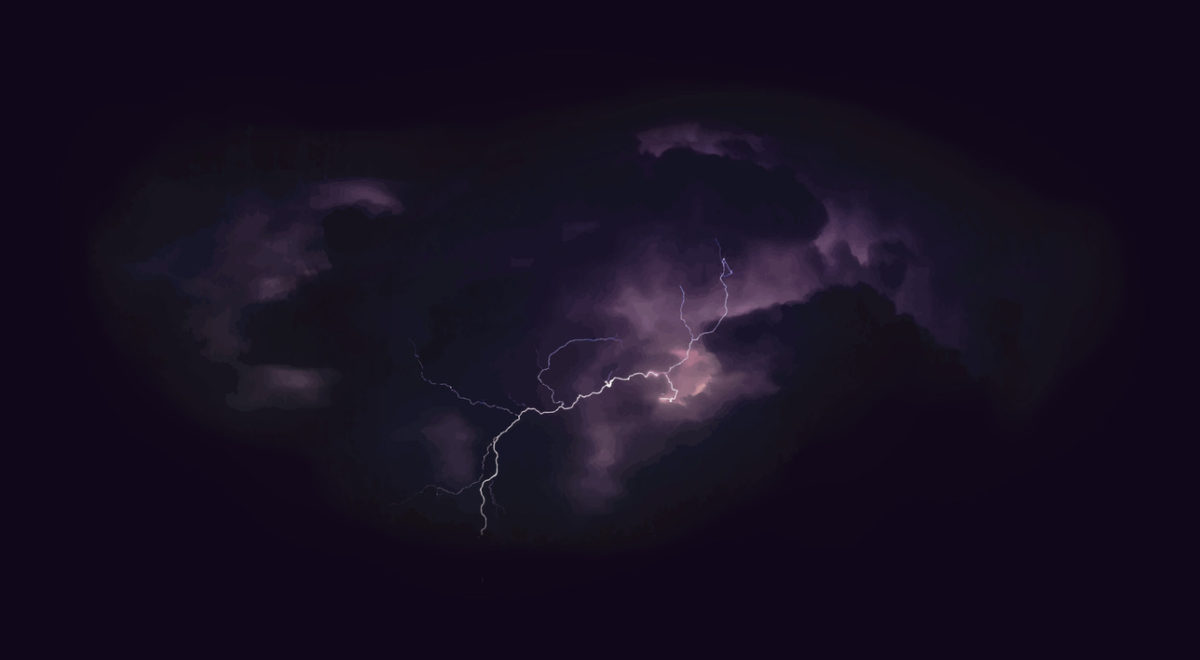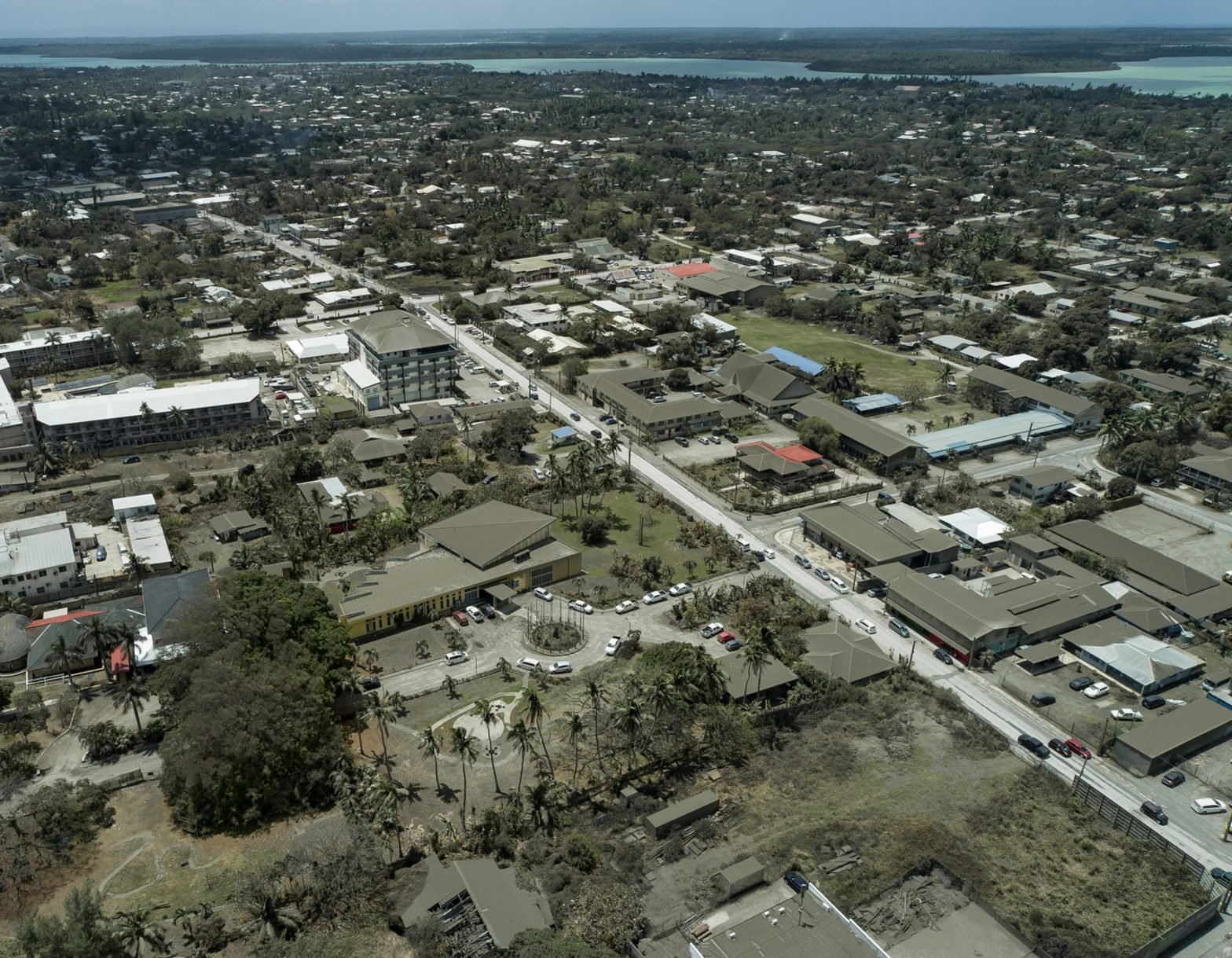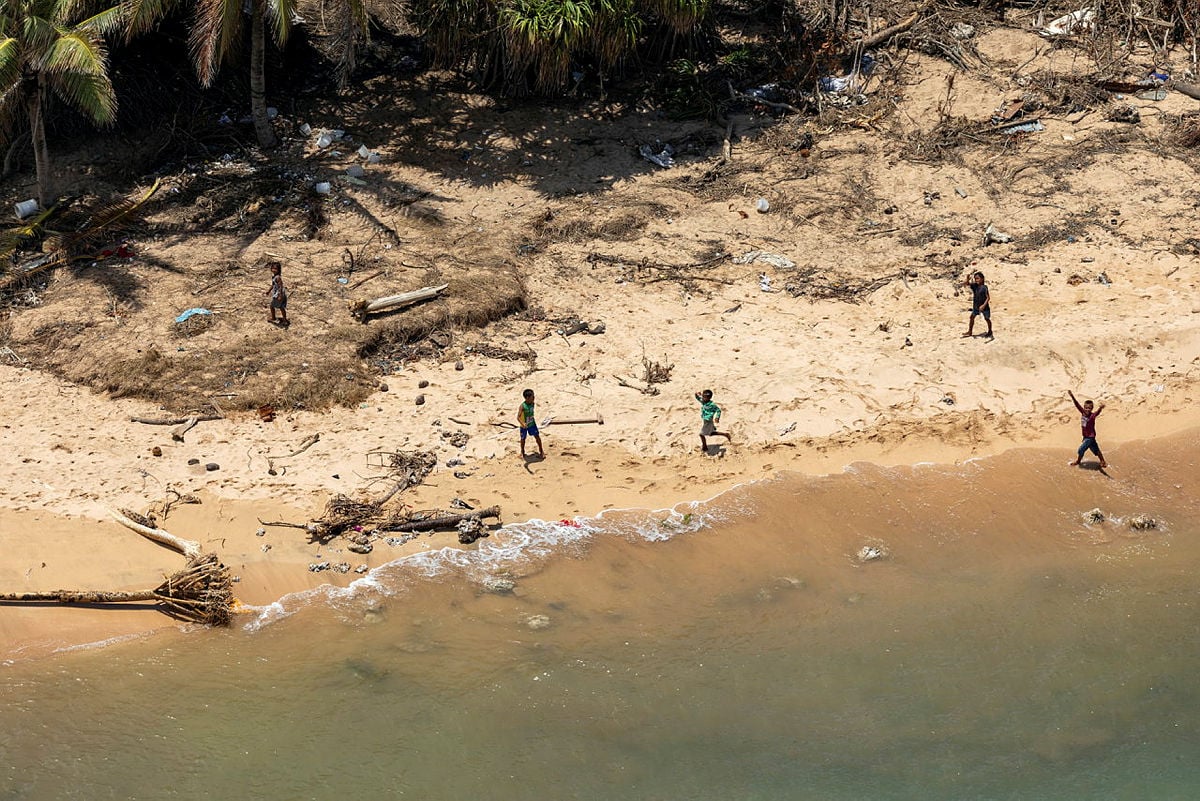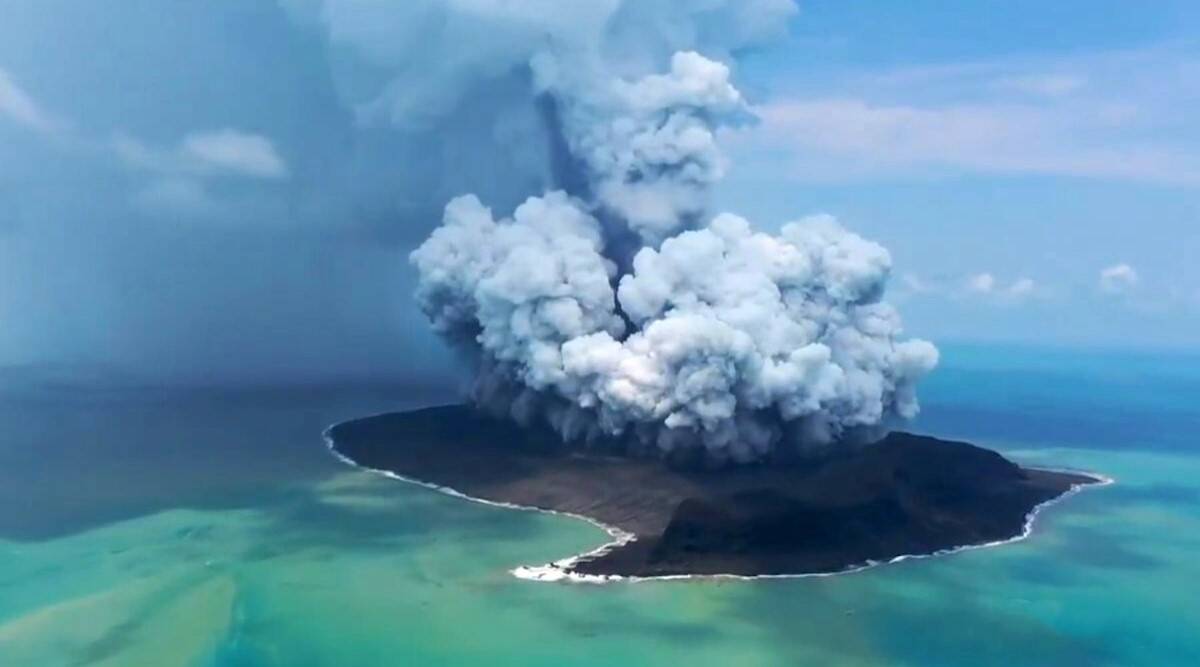Data shows why the volcanic lightning storm from the Tonga eruption was unlike anything on record.
Volcanic eruptions tend to evoke images of flowing molten lava and giant ash plumes, but when an underwater volcano off Tonga began a major eruption on 13 January, it was accompanied by one of the largest volcanic lightning events ever recorded.
The surrounding islands in the Tonga archipelago in the South Pacific Ocean were completely engulfed in lightning at various stages of the eruption which lasted days.
“I can’t imagine what the people on the islands would have been going through, with a huge ash cloud overhead, a tsunami flooding everything they own, and cloud-to-ground lightning coming down around them. It must have felt apocalyptic,” said Chris Vagasky, a meteorologist at Vaisala, a Finland-based environmental technology company.
The Hunga Tonga-Hunga Ha’apai volcanic island lies about 65 km (40 miles) north of Nuku’alofa, the capital of Tonga. Scientists said the volcano – which last experienced a major eruption in 2014 – had been puffing away for about a month before a series of blasts began on 13 Jan. Rising magma, superheated to around 1,000 degrees Celsius (1,832 Fahrenheit), then met with 20 degrees (68 Fahrenheit) seawater on 15 Jan, causing an instantaneous and massive explosion.
Scientists are still studying the behaviour of lightning. “One of the things that I’m really interested in looking at is the wave pattern in the lightning. As the eruption plume hit the stratosphere and spread outward, it appears to have created waves in the atmosphere,” said Vagasky.
Reuters used data from a ground-based global lightning detection network owned and operated by Vaisala, dubbed GLD360, to visualise the lightning activity during the eruption.
Visual lightning activity during the eruption
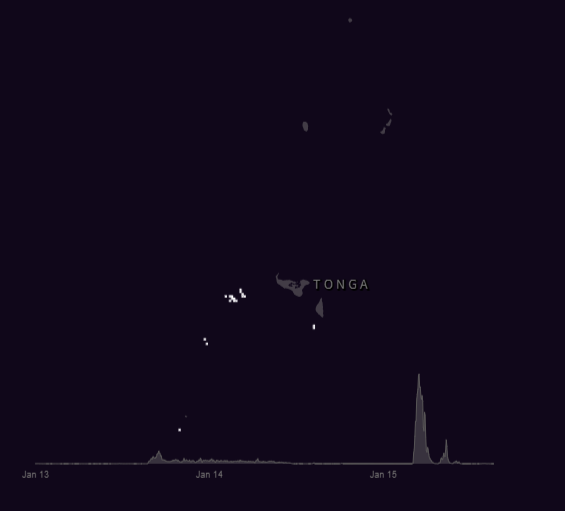
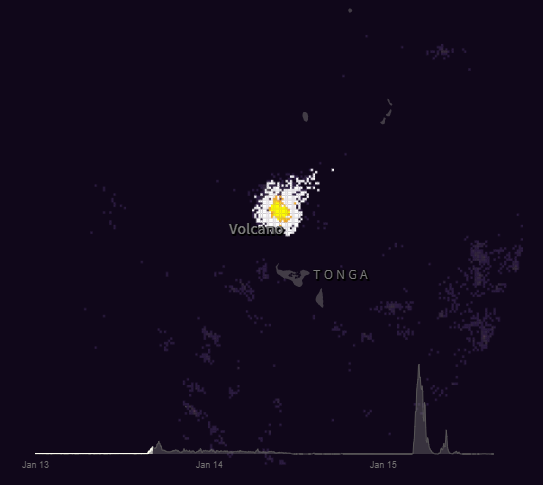

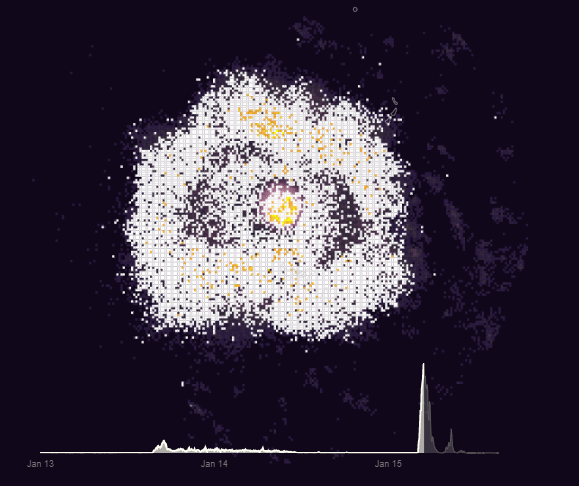
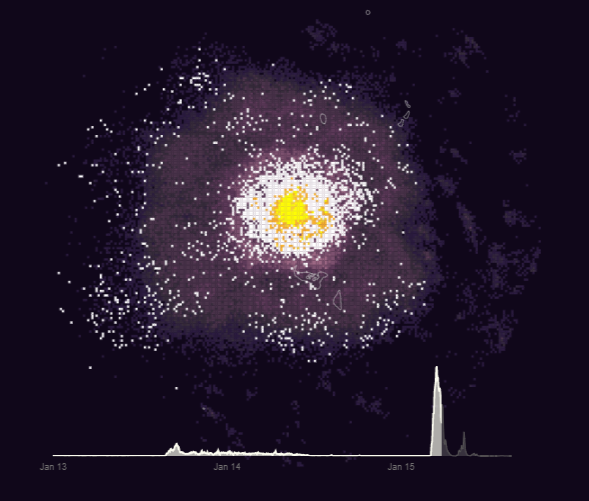
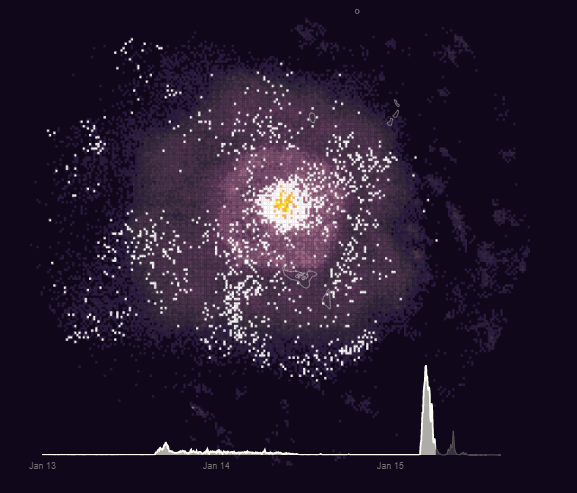
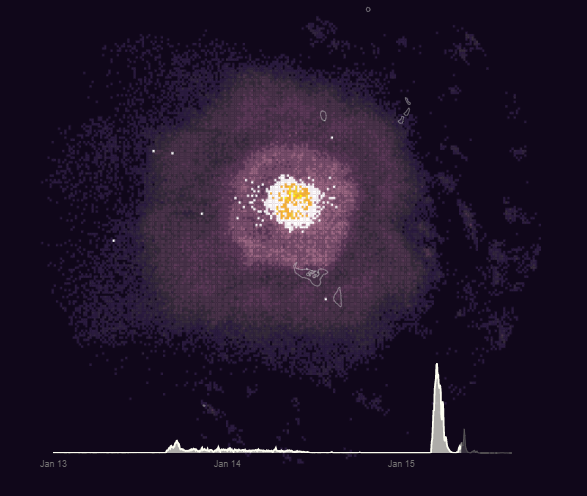
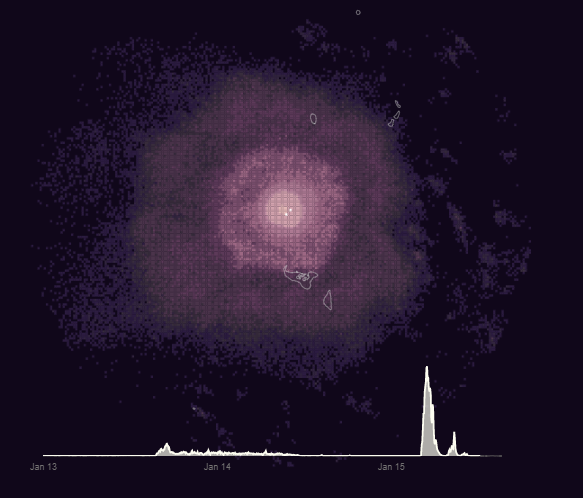
The lightning strikes throughout the Hunga Tonga-Ha’apai explosion were a record for a volcanic eruption.
On 13 January a blast above the surface caused a major lightning event lasting through to the following day. Then on 15 January, a massive underwater eruption triggered the main event, with almost 400,000 strikes recorded in six hours that evening.
According to GLD360 data, there were a total of almost 590,000 lightning strikes over the three-day period. That dwarfed the next largest event on Vaisala’s records, the eruption of Anak Krakatau in Indonesia in 2018, when a large chunk of a flank of the volcanic island slipped into the ocean, triggering a tsunami.
“In the December 2018 Anak Krakatau eruption, we detected about 340,000 events over a one-week period, so to detect nearly 400,000 in just a few hours is extraordinary,” said Vagasky.
Comparing the Hunga Tonga-Hunga Ha’apai eruption to the top five volcanic lightning events recorded by the global GLD360 network since 2012 reveals how extreme the events in Tonga were.
Not all of the lightning generated by an eruption actually strikes the ground. Lightning can also travel within an ash plume or between clouds. During the Tonga eruption, around 56% of the lightning struck the surface of the land or ocean.
“The percentage of lightning that was classified as cloud-to-ground was higher than you would normally see in a typical thunderstorm and higher than you typically see in volcanic eruptions, so that creates some interesting research questions,” said Vagasky.
Data from Vaisala shows Tonga usually records only a few hundred lightning strikes in an entire year. But over the course of the eruption, more than 1,300 strikes hit the main island of Tongatapu alone.
How does volcanic lightning happen?
Although caused by different materials in the atmosphere, volcanic lightning and that from a typical thunderstorm are both a result of particles becoming charged. When there are big positive and negative charge build-ups in the atmosphere, electrons flow between them, which is called lightning.
In a volcanic eruption, there are two main kinds of lightning. When the plume is small, up to around 4 kilometres (2.5 miles) in height, ash, rocks and fractured lava particles rub against each other, gaining and losing electrons in the process. Enough build-up of these opposite charges leads to a lightning strike. Because no water is involved in this process, it is known as “dry charging”.
In eruptions with tall plumes of about 7-12 kilometres (4.3-7.5 miles), lightning happens via a mechanism called “ice charging” as the plume reaches heights where water can freeze.
In a typical thunderstorm, it is the different sized ice particles, such as hail and ice crystals that collide, causing charge separation. The water for this ice formation comes from the atmosphere.
However, in a volcanic eruption, it is mainly the water content of the magma that supplies the water necessary for ice formation. The water concentrations in eruption plumes can be even greater than typical thunderstorms.
What happened in Tonga?
In the Tonga eruption, both kinds of lightning were observed. A dry charging phase on 13 Jan when the eruption plume was smaller, and an ice charging phase when the more violent eruption occurred on 15 Jan.
Explosiveness
The highly explosive nature of the eruption in Tonga could be a reason for a large number of lightning strikes. An eruption’s explosivity can determine the concentration of particles in a plume. As this increases, so does the possibility of lightning.
“We believe the base of the volcanic edifice failed and collapsed into a shallow magma reservoir, allowing the Pacific ocean waters (perhaps 100m deep) to explosively interact with the liquid rock, causing a partial caldera collapse and explosive eruption,” said James Garvin, chief scientist at NASA’s Goddard Space Flight Centre.
Seawater
Another factor is the presence of seawater. Lava breaks into smaller pieces when it comes into contact with water, thus increasing the number of particles available for collision.
According to a report in the Smithsonian Institution’s Global Volcanism Program, an eruption on 14 Jan “removed approximately the middle third of the island” and pushed the volcano’s vent underwater. Vagasky said the ensuing interaction of water and explosive magma from the volcano might explain the massive number of lightning strikes.
Questions remain
However, several facets of how and why volcanic lightning happens, especially at the microscopic particle interaction level, are still being studied and a definitive answer about why the lightning in the Hunga Tonga-Hunga Ha’apai eruption was so extreme remains elusive.
“Scientists are already working to understand what caused the Hunga Tonga eruption to be so violent, from the size of the explosion to the shockwave and pressure wave that travelled around the world, and the tsunami and the amount of lightning,” Vagasky said.
“Lots of research will be coming in the months and years ahead to understand it, said Vagasky.
This story was written by Manas Sharma and Simon Scarr, originally published at REUTERS on 15 February 2022, reposted via PACNEWS.

